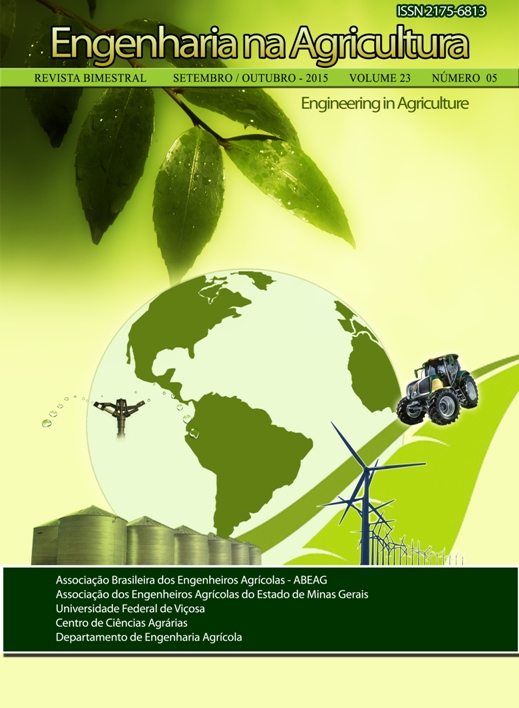PARAMETERS FOR MONITORING OF POULTRY CARCASS COMPOSTING - DOI: 10.13083/1414-3984/reveng.v23n5p457-465
DOI:
https://doi.org/10.13083/reveng.v23i5.536Keywords:
composto, estabilidade, maturidadeAbstract
The aim of this study was to investigate the use of the relationship between carbon and nitrogen (C/N) and the index defined by the relationship between the Cation Exchange Capacity and Total Organic Carbon (CTC/COT) for monitoring the composting of poultry carcasses. The experiment consisted of composting poultry carcasses by the methods: composting windrow and aerated static piles (ASP). The materials used in composting were poultry litter, sugarcane bagasse, coffee straw and poultry carcass. The proportion of the materials used in the assembly of the different treatments was 0.3 kg of sugarcane bagasse or coffee straw for every 1 kg of poultry carcass and 2 kg of poultry litter. A compost bin with a base 1.5 m2 and working height of 1.5 m, and the ASPs were approximately 3 m long, 2 m wide and 1 m high. Based on these results it can be concluded that the C/N ratio was not adequate to describe the evolution of this type of waste composting, especially in the late phase of active degradation and the humification stage. The CEC/TOC index was more appropriate to describe the composting process. The CEC described the reduction of particle size and resultant increase in the specific surface, and is also related to the humification process. The TOC described the presence of organic matter and its reduction indicated a reduction in organic matter or organic matter mineralization.Downloads
Downloads
Published
How to Cite
Issue
Section
License
Authors who publish with this journal agree to the following terms:
The author(s) authorize(s) the publication of the text in the journal;
The author(s) ensure(s) that the contribution is original and unpublished and that it is not in the process of evaluation by another journal;
The journal is not responsible for the views, ideas and concepts presented in articles, and these are the sole responsibility of the author(s);
The publishers reserve the right to make textual adjustments and adapt texts to meet with publication standards.
From submission, the author is fully conceding the paper's patrimonial rights to the publication, but retaining the owner of its moral rights (authorship and paper's identification) according to Creative Commons Attribution-Noncommercial.








 Licensed by
Licensed by 